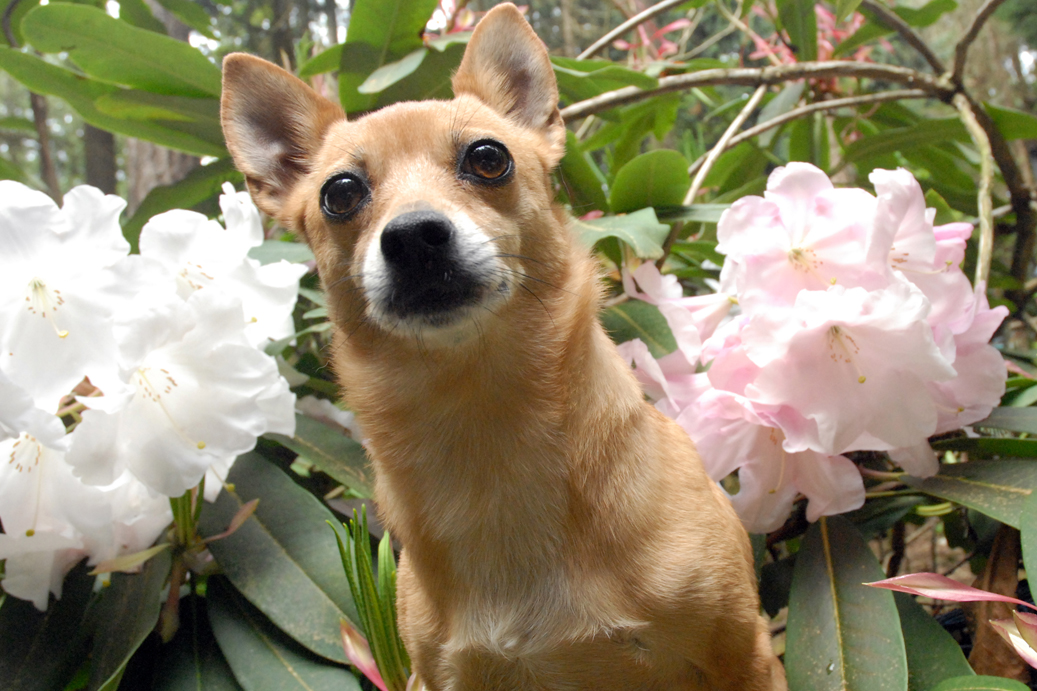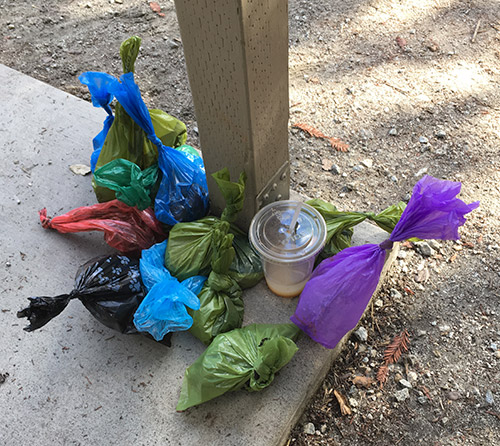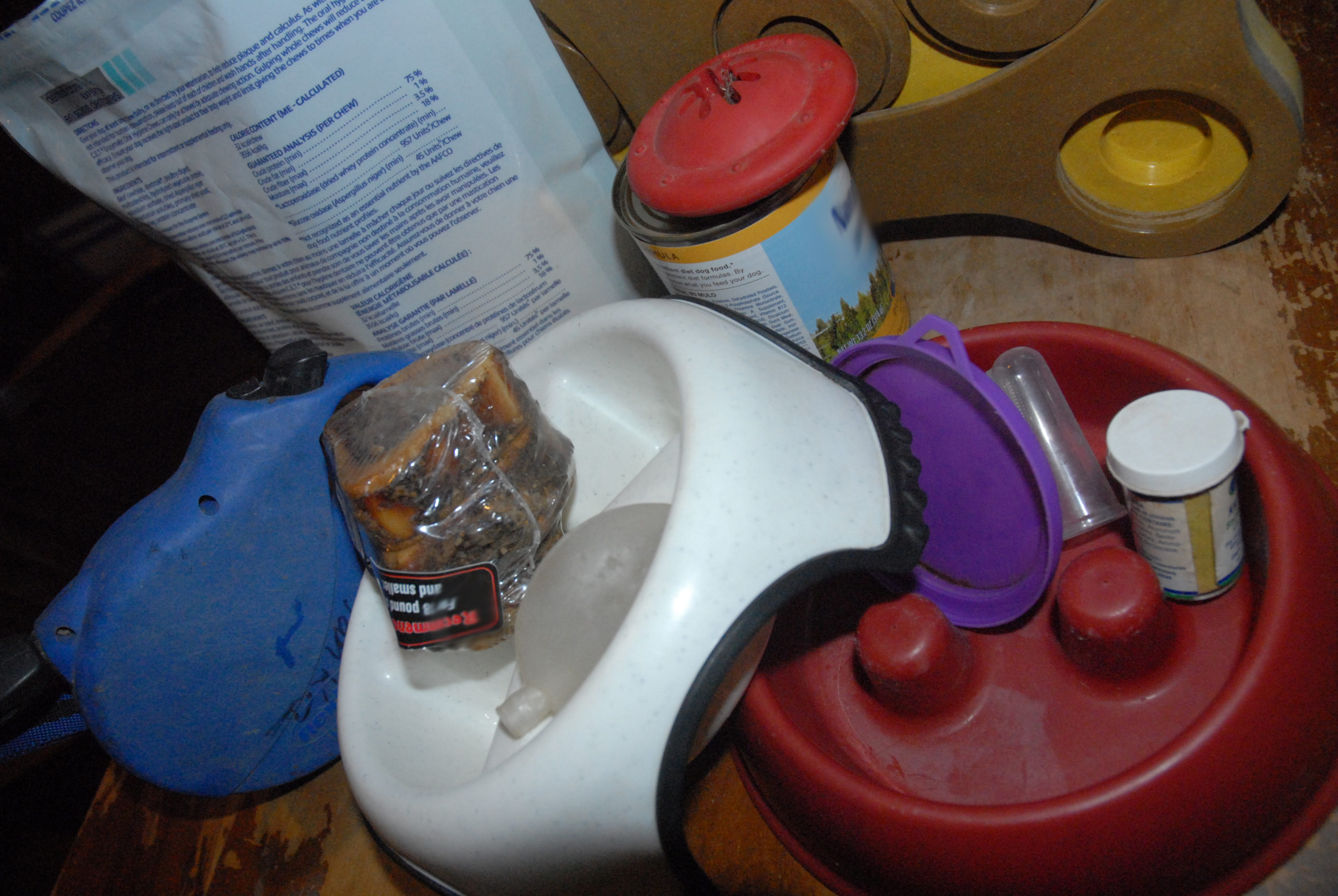WE LOVE OUR PETS!

Haiku and Rhododendron
Photo by Marian Blue
But…
is it in the nature of pets to love the environment?
Are we damaging nature with our pet love–fish to cats, birds to dogs, snakes to rats?
If we answer these questions honestly, we have to admit that pet care often equals environmental damage.
Here we’ll pause to acknowledge that pets provide many benefits.
It’s the nature of pets to:
- assuage loneliness.
- help us stay physically fit.
- probably help lower blood pressure, lower heart rate, aid sleep.
- teach children responsibility.
- act as service and rescue animals.
- and, if nothing else, make us laugh and play.
- and more Benefits from Pets.
Few (any?) people advocate eliminating pets. Does that mean that environmental damage must continue to be in the nature of pets? Or can changed human behavior change that?
Change Can Happen
In the past, people have adapted, changed their behaviors.
For instance, when I was a kid in the 1950s, leash laws were a rarity; dogs trotted freely from yard to yard and even from neighborhood to neighborhood. My mother and other shoppers regularly included one or more of their small dogs in the cart kiddie basket as they wandered grocery store aisles.
Buying pet food was optional. Dogs usually got scraps off the table. Cats earned their living off rodents and birds as well as scraps from dinner tables and trash cans (where dogs also often dined).
As for picking up poop–! I was an adult before I saw a person cleaning up after a dog. Not until the 1970s did poop laws appear.
Today, leash laws are common, poop bags are ubiquitous, and pet food is a multi-billion dollar a year business.
Change For the Good
Unfortunately, many of those changes are now damaging our environment, not because the changes are bad but rather because hindsight is better than foresight. The changes didn’t incorporate today’s awareness of environmental issues. Consequently, pets and the pet industry contribute tons of plastic, carbon, and waste to the environment.
The good news is that we can make wise changes to improve the situation and keep our pets, too.
Pick It Up—Then What?
We mostly acknowledge that picking up pet poop is essential for the environment and for our health (see…Scoop the Poop). Unfortunately, we mostly use plastic bags to do the job. Even worse, some people leave the poop-filled bags on the beach, hanging from branches, or hidden under rocks.
First, you have alternatives to plastic: Paper waste sheets, paper bags (such as Pooch Paper), newspaper, portable tools, and some bags that aren’t plastic (plant-based). Unfortunately, there are a host of bags marketed as compostable or biodegradable that aren’t.

Picking up poop and leaving it for someone else to pick up? Pick up then dispose of responsibly. Photo by Abandoned Poop Bags
Read the label, which should advise what the bag ingredients are, how long break-down takes, and how to best dispose of the bag. Using alternatives to anything plastic is best. However, if you’re a user of plastic in the home, at least re-using the plastic is helpful rather than buying poop bags.
Once you’ve picked up, dispose of poop appropriately, usually in the trash. The city of Bothel has these excellent hints. Safe Poop Disposal
Cats Poop, Too
While thinking about poop, remember that cat poop isn’t sweeter, better for the environment, or cleaner than dog poop. Dispose of cat poop and litter in the same way as dog poop. Avoid using plastic to line litter pans.
Cleaning up after cats is complicated by the fact that cats, unlike dogs, wander where they want. Unfortunately, that means cat poop can wind up in someone’s flower or vegetable garden or even in children’s play areas. This saves concern for owners who chose to let their cats wander, but makes cat poop other people’s problem.
Don’t believe that cats are somehow wilder than dogs. See Wild Things Sanctuary. Why do we treat cats as free agents? This site addresses some our social history regarding cats and why they aren’t legally required to be contained: Michigan State University
Attitudes about cats are changing. Keeping your cat on your property (or on a leash) might well be required in the near future. People are building catios and making their yards secure. Check out the Humane Society page. This not only benefits people who object to cat poop, it also protects birds (American Bird Conservancy), squirrels, and the cats themselves U.S. National Library of Medicine.
Beyond Poop

Plastics for pets: leashes, treat packaging, the lining of food cans, can covers, dental supplies, water/food dishes, toys (and even squeakers in toys), medical containers…our pets are plasticized. Photo by Marian Blue
When buying pet accessories–toys to food to beds to dishes to cleaners–consider ways to avoid plastic, especially one-use plastic. This includes bags and packaging. Pets, like people, aren’t helped by ingesting plastic. Plastic and Your Pet Note that plastic is often hidden in what you buy, such as the lining of pet food cans.
Other information abounds, including
Changing Lives
Every day brings opportunities to live harmoniously with all other life (see Living In Harmony With Wildlife ). By thinking more deeply about how to care for both our pets and our environment, we can bring ecological awareness into loving our pets. Then we can say that the nature of pets is good for people and the environment.
Next Month’s Blog: What Trees and Plants are Best for Your Yard?

Pingback: Share the Joys of Water! Conserve, Don't Hoard! - Sunbreak PressSunbreak Press